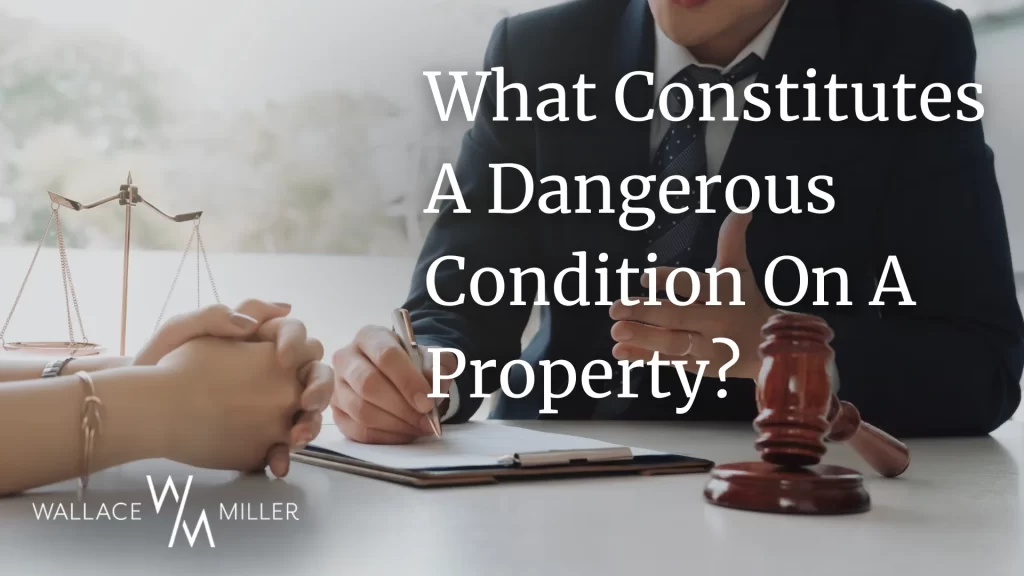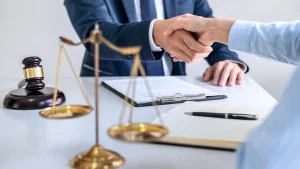Posted on Monday, February 26th, 2024 at 8:42 pm

Property owners have a legal duty to maintain their premises in a reasonably safe condition for visitors. This obligation includes identifying and addressing potential hazards that could lead to accidents and injuries. However, not every imperfection or irregularity on a property constitutes a dangerous condition. Knowing what qualifies as a dangerous condition is crucial for both property owners seeking to minimize liability and individuals who have been injured on someone else’s premises.
Defining a Dangerous Condition
In the context of premises liability, a dangerous condition is typically defined as an unreasonable risk of harm that a property owner knew about or should have known about through the exercise of reasonable care. Some common examples of dangerous conditions include:
- Structural defects: Unstable or deteriorating buildings, decks, or stairs that pose a risk of collapse or falls.
- Slippery surfaces: Wet floors, icy sidewalks, or spills that create a high risk of slips and falls.
- Inadequate lighting: Poorly lit stairwells, parking lots, or walkways that make it difficult for visitors to identify and avoid hazards.
- Unsafe landscaping: Overgrown vegetation, uncovered holes, or hidden drop-offs that could cause trips or falls.
- Unsecured objects: Heavy or sharp objects that are not properly secured and could fall or cause injuries.
- Malfunctioning equipment: Elevators, escalators, or other mechanical devices that are not properly maintained and pose a risk of harm.
To qualify as a dangerous condition, the hazard must typically be one that a reasonable person would not expect to encounter or be able to avoid through the exercise of ordinary care.
Identifying Hazards on Property
Property owners should take proactive steps to identify potential hazards on their premises. Some key strategies for identifying dangerous conditions include:
- Regular inspections: Conducting thorough, periodic inspections of the property to look for signs of wear, damage, or developing hazards.
- Monitoring high-risk areas: Paying special attention to areas with a higher likelihood of accidents, such as entryways, staircases, and heavily trafficked walkways.
- Responding to complaints: Promptly investigating any reports or complaints from visitors or employees about potential hazards on the property.
- Staying informed: Keeping up-to-date on industry standards, building codes, and best practices for property maintenance and safety.
By actively seeking out and identifying dangerous conditions, property owners can take timely action to address hazards and minimize the risk of accidents and legal liability.
Legal Implications of Property Hazards
When a dangerous condition on a property causes an accident and injury, the property owner may be held liable through a premises liability claim. To succeed in such a claim, the injured party typically must prove that:
- The condition posed an unreasonable risk of harm.
- The property owner knew or should have known about the condition.
- The property owner failed to take reasonable steps to address the condition or warn visitors of the risk.
- The dangerous condition directly caused the victim’s accident and resulting injuries.
If these elements are established, the property owner may be responsible for compensating the victim for their medical expenses, lost wages, pain and suffering, and other damages.
It’s important to note that the specific legal requirements for proving a premises liability claim can vary depending on the visitor’s status (invitee, licensee, or trespasser) and the jurisdiction in which the accident occurred.
Premises Liability for Dangerous Conditions
To minimize the risk of premises liability claims, property owners should take a proactive approach to addressing dangerous conditions:
- Promptly repairing or removing identified hazards.
- Providing clear warnings or barriers around hazards that cannot be immediately addressed.
- Regularly maintaining and updating the property to ensure it meets current safety standards.
- Documenting all inspection, maintenance, and repair efforts.
- Consulting with legal counsel to ensure compliance with local laws and regulations.
By taking these steps, property owners can demonstrate a commitment to visitor safety and reduce the likelihood of successful premises liability claims.
When to Seek Legal Help
 If you’ve been injured due to a dangerous condition on someone else’s property, or if you’re a property owner facing a premises liability claim, it’s essential to seek the guidance of an experienced attorney. A skilled lawyer can help you understand your rights, gather evidence, and build a strong case to protect your interests.
If you’ve been injured due to a dangerous condition on someone else’s property, or if you’re a property owner facing a premises liability claim, it’s essential to seek the guidance of an experienced attorney. A skilled lawyer can help you understand your rights, gather evidence, and build a strong case to protect your interests.
Contact Wallace Miller Today
Recognizing what constitutes a dangerous condition on a property is essential for both property owners and visitors. By understanding the legal obligations surrounding premises liability and taking proactive steps to identify and address hazards, property owners can create safer environments and minimize the risk of accidents and legal claims.
If you’ve been affected by a dangerous condition on a property in Chicago, the knowledgeable attorneys at Wallace Miller are here to help. Contact us at (312) 261-6193 for a free consultation, and let us put our experience to work for you.
